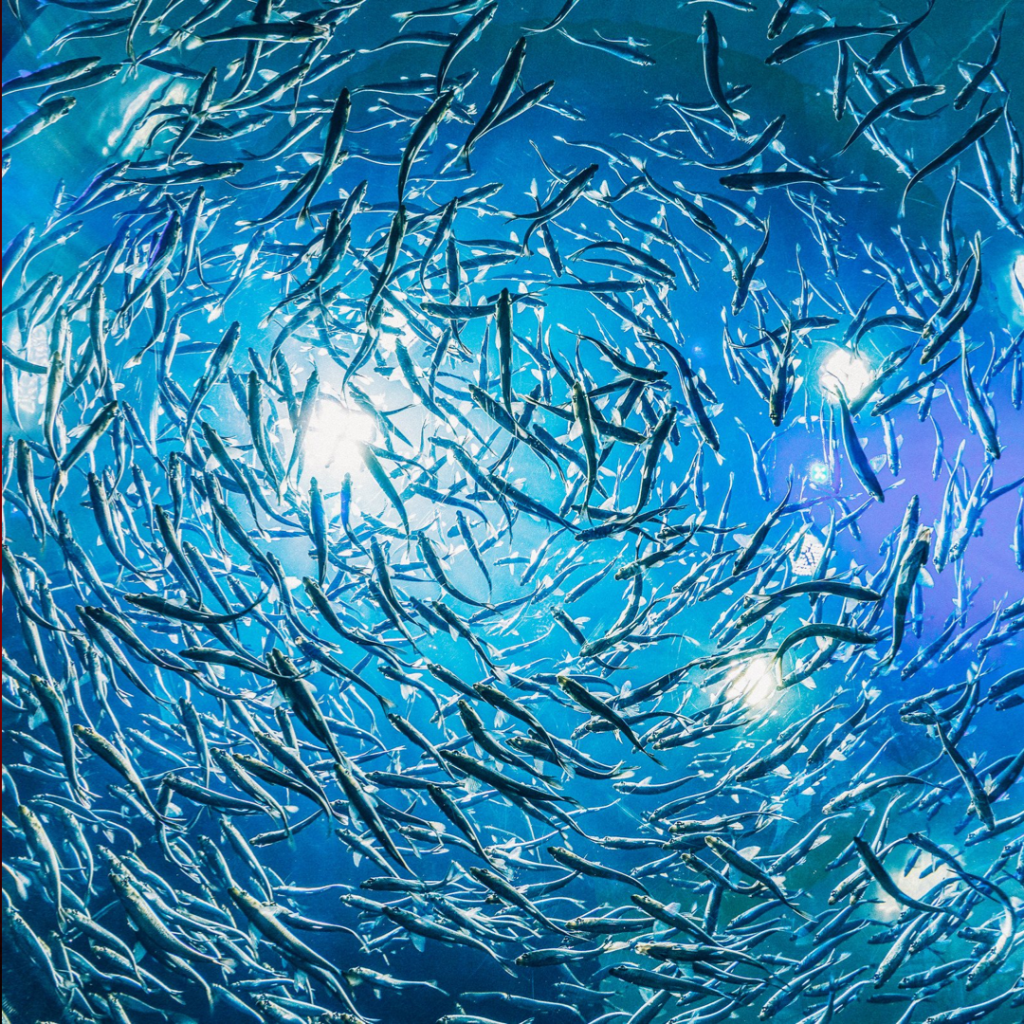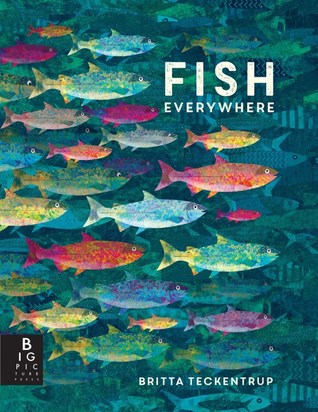Dive into the ocean with me and let’s swim amongst the schools of fish. We’ll encounter beautiful fish, ugly fish, huge fish, tiny fish, and weird fish. Some fish carry lanterns on their head, others imitate rocks and some look like snakes. Some fish teeth are so enormous, they can’t close their mouths. Did you know some fish can fly? There is such a variety of fish in the ocean we won’t have time to grow bored.

First, we need to know what makes a fish a fish. Not every creature that lives in the ocean is a fish. Surprised?
- Fish are cold-blooded or ectothermic. They prefer cold water as it is more oxygenated than warm water making it easier for fish to breathe. But water that is too cold can make them sluggish. Can you think of a warm-blooded mammal in the ocean? A dolphin or a whale? They’re not fish!
- Fish are vertebrates which means they have backbones like us. Can you think of an ocean creature without a backbone? Perhaps an octopus, starfish, or jellyfish? They’re not fish!
- Fish live all their lives in water.
- Fish have gills to breathe in oxygen underwater all through their life cycle.
- Fish have swim bladders which is a special organ that helps them maintain buoyancy in the water so that they neither float nor sink.
- Fish have fins to create motion. Pectoral and pelvic fins steer the fish in the direction it wishes to go, while the dorsal and anal fins maintain balance so the fish doesn’t fall over. The caudal fin propels the fish forward and its shape determines how fast it can go.
Explore the anatomy of a fish with this poster:
There are three main kinds of fish:
- Bony fish make up most of the fish in the sea and they are in the Osteichthyes class.
- Cartilaginous fish like sharks and rays are in the Chondrichthyes class.
- Jawless fish are an interesting bunch and they are in the Agnatha class.
| Bony Fish Osteichthyes Class | Cartilaginous Fish Chondrichthyes Class | Jawless Fish Agnatha Class |
| Freshwater and Marine fish | Marine Fish | Marine Fish |
| Endoskeleton is made of bone | Endoskeleton is made of cartilage | Cartilage skeleton |
| They have 4 pairs of gills | They have 5-7 pairs of gills | 7 or more paired gills |
| Exoskeleton is made of cycloid scales | Exoskeleton is made of Placoid scales. | Ectothermic |
| They are ovoviviparous/viviparous | They are viviparous | No fins |
| Their livers are trilobed | Their livers bilobed | No Stomach |
| The tail is a homocercal type | The tail is a heterocercal type | Two chambered Heart |
| Fertilization is external | Fertilization is internal | External Fertilization |
| The mouth is normally terminal | The mouth is at the ventral surface | No jaw |
Investigate fish types with this Venn Diagram:
Bony Fish | Salmon
Salmon are boney fish that live in rivers and oceans making them anadromous fish. They have an amazing lifecycle and they embark on an incredible journey, so let’s swim along with them. We’ll begin our journey in flowing river streams high in the mountains.
Salmon hatch from eggs in a river habitat. They spend their early life exploring streams and rivers, before taking an adventurous swim downstream to mature in the ocean where they live most of their adult life. Then amazingly, salmon will return to their nesting river home to spawn the next generation of salmon. Some salmon journey up to 1600 km from the river to the ocean and back again.
The female will dig a nest in gravel called a redd with her tail for the thousands of eggs she is holding. Once she has placed her eggs in the redd the male will milk or fertilize them.
Salmon lifecycle stages:
- Once the eggs hatch, salmon are known as alevins. In this stage, the egg sac is still attached giving them the nutrients they need to grow.
- When the egg sac is finished, salmon emerge from the nest as a fry to search for food like insects.
- As the fry matures, it develops camouflage parr marks and is now called Parr.
- The Parr will continue to grow and change colour. Once they are silver, they’re known as Smolts and they begin to make their journey toward the ocean.
- When the Smolts reach the estuary (where the river meets the sea), a process called smoltification occurs, allowing them to live in saltwater.
- Salmon mature in the ocean and this process can take 1 to 7 years, depending on the species. They migrate riverward once they’re ready to spawn and begin the lifecycle all over again.
Explore the Salmon Life Cycle with this poster:
Cartilage Fish | Sharks
Sharks are intimidating creatures. They look really scary with all those rows of sharp, pointy teeth, but most sharks are bottom dwellers feeding on the ocean floor for clams and crabs. Sharks are cartilaginous fish. This means a shark’s skeleton is made from cartilage.
Do you know what cartilage is? Touch the tip of your ear, feel its shape and bend it a little. The tip of your ear and nose is made with cartilage. It is flexible, lighter and it keeps its shape.
The body of a shark is perfectly streamlined for speed. Sharks are the only sea creature known to catch tuna or marlin. Sharks have an amazing ability to sense prey from long distances. The shark’s snout has nerve receptors called ampullae that sense electricity in the water.
Did you know, every creature in the ocean gives off electricity when they move or when a heart beats? These movements cause electrical currents that travel through the water, attracting predators like sharks or rays. Sharks have keen eyesight and they can smell blood particles floating in the water from miles away. Sharks have a tremendous advantage over their prey with all these extraordinary senses.
Investigate fish shapes with this poster and notebook page:
Jawless Fish | Lamprey
Even though sharks may seem frightening to us, I think the lamprey is the most terrifying creature. They lurk near the ocean floor preying on unsuspecting victims, even the great white shark. Lampreys hide, still and quiet waiting for a delicious meal to swim by, when suddenly, they slither out of cover, their snake-like bodies spring forward to attack, burrowing teeth into their prey, grating back and forth to reveal flesh and gradually suck the life out of a helpless victim.
Lampreys do not have a jaw, they have mouths but can’t open and close them, so instead of chewing, they suck and slurp. Lampreys hunt together in teams.
Like salmon. lampreys begin their lifecycle in freshwater where they grow into adulthood before migrating into the ocean, to return to spawn in freshwater.
Which fish is most terrifying to you? The shark or the lamprey?
Parental Guidance is Advised with this Video. Not suitable for sensitive children.
Children:
What do you remember? Show what you know with this set of notebook pages:
How do fish breathe underwater? Let’s find out!
Shall we dissect a fish?
Have you seen the world’s ugliest fish?
Or a fish who makes it’s own light?
Plan to immerse yourself into a fishy week by:
- Fishing in a nearby lake, pond or in the ocean. We love to spend family time fishing together!
- Visit an aquarium. We went to visit the Perth Aquarium last year. I thought it was amazing! Here are a few fishy videos from our trip:
- Check out fishy books from your library.

Sing a Song!
Genesis 1:20-21
Then God said, “Let the waters teem with swarms of living creatures, and let birds fly above the earth in the open expanse of the heavens.” God created the great sea monsters and every living creature that moves, with which the waters swarmed after their kind, and every winged bird after its kind; and God saw that it was good